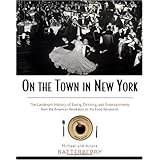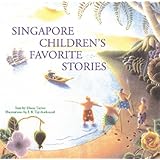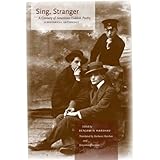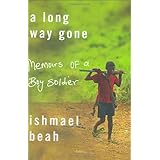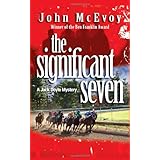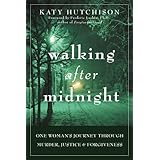
Average Reviews:

(More customer reviews)In a world where an "eye for an eye," and a "tooth for a tooth" is often the law of the land, it is a welcomed relief to read a book about forgiveness and reconciliation, especially after a horrendous act of murder. A young man who was drunk at the time brutally and senselessly murdered Katy Hutchinson's first husband, Bob, on New Year's Eve in 1997. No one could have faulted the author had she called for the full force of the law to come down on the killer and send him away to prison for life. Instead, she reaches out to him and through numerous personal contacts seeks to understand what led him to kill her husband, helps him to come to grips with his past, make amends, and begin his life anew in a productive manner. Her basic philosophy is that it is senseless to destroy another life over this incident; there has already been enough hurt on the part of her husband, her, and her children. Mrs. Hutchinson shows that forgiveness while not easy is possible after tragic and painful events, and that it is possible for a young man who killed to begin reconstructing his life in a positive way. It is worth the time to read the book to realize that the way to end violence is not with more violence, but with redemptive love.
My criticisms of the book lie not with Mrs. Hutchinson's experience or motivations but with the way in which it was written. The great Russian writer, Franz Kafka, said that if you are going to put a gun on the mantle piece in the beginning of your story, someone has got to use the gun before the end of the story. He was referring to the fact that you don't introduce ideas or characters and then not deal with them. "Walking After Midnight" introduces many situations that never are fully dealt with or resolved. As a reader who does not know the author, I am left wondering why she said some of the things she did.
For example, shortly after her husband's murder she moves from Squamish, British Columbia to Vancouver Island with her children. Her first husband's law partner recommends an attorney, Michael Hutchison, in Vancouver to handle her legal matters. In the course of their meetings, they fall love and are married nine months after her husband is killed. The author indicates that some of her friends and her mother feel uneasy over her relationship with and subsequent marriage to Michael. She says on page 103, "...those who know me well will assuage their fears by reflecting on my history of good decision making. The rest of the world will not see it that way. I don't care..." What she is doing here is bringing to the reader's attention that the people who know her the best are not embracing this relationship. However, she does not show the reader how that reaction is affecting her. Does it make her angry or does it create doubts in her own mind about her impending wedding? How does she resolve this lack of enthusiasm? She says that her friends should trust her knowing her good decision making in the past and for the rest of us, she doesn't care. That does not resolve the issue. Good decision making in the past is no guarantee of future good decisions, and it tells the reader to mind his or her own business, which I find to be disrespectful of the reader.
The other issue this raises is why bring Michael into the memoir at all. The memoir is really about her husband's murder, her grief, her need to take care of her five-year old twins, and the reconciliation with Ryan Aldridge, the young man who killed her husband. Why not just stay with that story? A memoir does not have to tell the whole story. I'm sure she wanted to bring Michael in because of the love they have for each other and she wanted to honor him. However, from a purely literary point of view, it gets in the way of the real story and raises too many questions that act as a distraction to the main story. Her relationship with Michael could be another memoir.
Lastly, I never quite understand why restorative justice is so important to the author. She mentions that her father before he left a room would look around to see if anything needed doing. She says that that behavior instilled in her a sense of responsibility to clean up after herself and those around her. She then transfers that learning to cleaning up after her husband's murder, which involves the reconciliation with Ryan. But is that all there is to it? Why is cleaning up so important? Why does she have clean up other peoples' messes? Can't they take care of themselves? In her own life and work did she see the awful affects that hate can have on people? Perhaps she was a victim of that hate herself, which made her determined never to hate another person. Or maybe she was the recipient of love and forgiveness for something that she had done wrong and wanted others to experience the same. In other words, what in her life led her to value restorative justice? Was it just her father picking up things in a room? That sounds simplistic for a complex and counterintuitive idea such as restorative justice. I think that if we knew more about how this attitude developed in her, it could be used to help develop it in others.
In spite of my critique (and please remember I am only dealing with the method and style of writing), I think it is a powerful story, and my only wish for the author, her family, and Ryan Aldridge is for peace, happiness, and fulfillment in life.
Click Here to see more reviews about:
Walking After Midnight: One Woman's Journey Through Murder, Justice & Forgiveness"Many people who have been harmed or wronged often feel that to respond with non-violence and forgiveness is to be weak. As Katy Hutchison reveals here, to forgive and seek reconciliation not only requires even more strength than a resort to force or retaliation, but also ensures deeper, more far-reaching beneficial consequences for all concerned. I am sure her remarkable story will serve as an inspiration to others by beset by grief and loss as she was."-The Dalai Lama On New Year's Eve, 1997, Bob McIntosh left his family and friends at the dinner table to check on a disturbance at a neighbor's house. He never came home. Savagely beaten by an unknown assailant, McIntosh died that night at a local hospital, leaving behind his wife and twin four-year olds. While authorities searched for McIntosh's killer, his wife, author Katy Hutchison, began the slow process of rebuilding a life for her children and herself. Refusing to be defined by her husband's murder, she moved to a different town, pursued a new career, and eventually remarried-but, with questions about her husband's death still unanswered, the healing Hutchison longed for was slow in coming. In the spring of 2002, authorities arrested a young man named Ryan Aldrigde for the murder of Bob McIntosh. On hearing the news, Hutchison startled investigators by asking to meet the man who had killed her husband. She didn't take satisfaction in seeing Aldridge in custody, nor did she want to rail against him for the harm he had inflicted on her and her family. Instead, she wanted to learn from him why he had attacked McIntosh and what she could do to help stop incidents like it from happening again. In a letter she sent to Aldridge after his arrest, Hutchison offered this remarkable sentiment:"All I want for you is what you took from Bob-a happy and productive life."Walking After Midnight tells a story at turns devastating and triumphant, a unique exploration of one woman's courageous response to tragedy that challenges our expectations about grief and loss. It's an inspiring account of the power of forgiveness, compassion, and a different kind of justice."An excellent primer for handling loss with intelligence and dignity...an antidote to the endless cycles of violence that consume too many lives and too many countries."-Frederic Luskin, Ph.D., author of Forgive for Good and director of the Stanford University Forgiveness Projects"A remarkable story of tragedy and transcendence. Not everyone who walks this road will make the choices Hutchison did, but all will recognize the intersections and obstacles she encounters along the way. And no one who reads this story can dismiss the authenticity and passion with which it is told."-Howard Zehr, founding theorist of restorative justice, professor of restorative justice at the Center for Justice and Peacebuilding of Eastern Mennonite University and author of Changing Lenses
 Get 31% OFF
Get 31% OFF
Click here for more information about Walking After Midnight: One Woman's Journey Through Murder, Justice & Forgiveness







